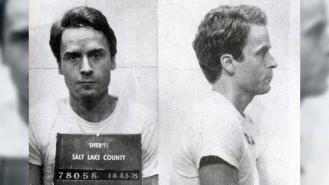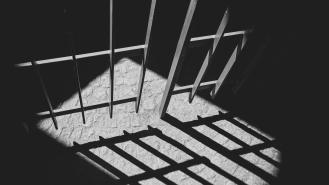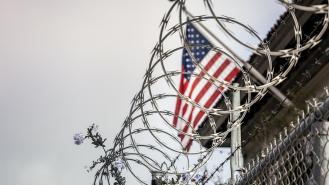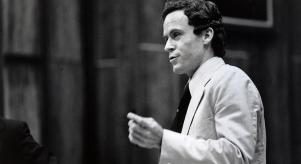
How El Chapo escaped from prison and went on the run
Before being locked up for life in an American maximum security prison, he was one of the most successful drug lords in history. Joaquín ‘El Chapo’ Guzmán carved out an empire for himself as the head of the powerful Sinaloa Cartel, becoming one of the most feared gangsters in South American history.
Guzman’s flooding of the US and European markets with cocaine, marijuana, methamphetamine, and heroin brought him to the attention of international law enforcement agencies and made him one of the most wanted criminals in the world. When he was finally tracked down and imprisoned, it led to an extraordinary series of escapes that made the violent drug lord an unlikely global celebrity.
Guzman had fought his way to the top of the Mexican criminal underworld via a mixture of extreme violence and a genius for opening up supply lines into the United States and Europe. By the early 1990s, he was the most feared crime boss in South America, but he had made a lot of enemies along the way.
Top of the enemies list was the Tijuana Cartel, which first targeted Guzman’s organisation in 1989. A bloody, tit-for-tat war followed, wiping out several members of both cartels along with their families and children. After three years of beheadings and shootings and torture, the Tijuana Cartel was handed the opportunity to take out Guzman once and for all.
An informant tipped the cartel off that he was in a limousine at Guadalajara International Airport, waiting to board a flight. A 14-man hit squad was dispatched to take him out. However, the squad had been given the wrong target, and instead of hitting Guzman’s car, they opened fire on the limousine of Cardinal Posadas Ocampo, the archbishop of Guadalajara. The cardinal was killed in a hail of bullets, while Guzman fled the scene unharmed.
The death outraged Mexican society and a huge manhunt was launched not only for the killers of the priest but also for their intended target. Guzman, who had previously been a shadowy figure in the criminal underworld, unknown to most people, was dragged into the light as wanted posters with his face appeared all over the country. He realised he had to get out of there. Originally, he fled to a ranch he owned in Tonalá, then to Mexico City, and finally over the border into Guatemala in June 1993.
Guzman paid a Guatemalan official $1.2 million to let him hide out in the country. After pocketing the money, the official tipped off the authorities, and Guzman was tracked down and arrested in a hotel close to the Mexico-Guatemala border. He was extradited back to Mexico, put on trial, and sentenced to 20 years in prison.
While El Chapo languished in jail in Mexico, a relaxing of relations between his home country and the USA made his transfer into the American justice system a very distinct possibility. During his time as the head of the Sinaloa Cartel, he had imported more narcotics into the USA than any other drug lord in history and the authorities there wanted him to face charges in a court of their own.
Guzman had to get out of jail fast if he was to avoid extradition and imprisonment in the USA. On 19th January 2001, he bribed a guard to open his prison door. He clambered into a laundry cart which was wheeled through the prison and out of the front door by a maintenance worker, Javier Cambreros, who had also been bribed. Once freed from the jail, Guzman was driven to a petrol station by Cambreros. The maintenance worker went inside and when he returned to his van, Guzman had fled.
For his part in aiding El Chapo’s escape, Cambreros is now serving a lengthy jail sentence, as is the prison’s director who was also in the drug lord’s pocket. One of the guards who refused to go along with Guzman’s plan was found murdered seven years later. It is estimated that the escape cost $2.5 million in bribes to prison officials and officers.
The drug lord spent the next 13 years hiding out in the Sierra Madre mountains, running his drug empire while a massive manhunt got nowhere. As time went by, he grew bolder and bolder about appearing in public, such as attending a family reunion in Sinaloa. This boldness eventually caught up with him when disloyal bodyguards tipped off the cops about his whereabouts.
Police broke into Guzman’s apartment when he was in bed with his wife and, after a brief tussle where he suffered a beating, the drug lord was again taken into custody. His destination this time would be the Federal Social Readaptation Center No. 1 in the town of Almoloya de Juárez. At the time, the prison had a reputation for being an inescapable fortress. Guzman very quickly shattered that reputation.
His second escape occurred on the evening of 11th July 2015. At 8:52pm, guards monitoring Guzman saw him enter the shower area of his cell - the only part of his room that wasn’t covered by CCTV. When he failed to re-emerge after 25 minutes, the alarm was raised and guards rushed to check up on him.
Opening the cell, they found it empty. They discovered a ladder leading to a 1.5km tunnel buried 10ft underground. It led to a construction site. A motorbike was found near the end of the tunnel, which the authorities assume Guzman had used to make his getaway. For a second time, the notorious El Chapo was on the loose.
Guzman’s escape was a huge embarrassment to the Mexican government and the country’s president, Peña Nieto. Within hours, most of the country was on lockdown. Airports cancelled flights and soldiers were deployed to all areas of the country to hunt the drug lord down. A $60million bounty was offered to anyone offering information leading to his arrest.
Guzman again went into hiding as not just Mexican authorities, but also worldwide law enforcement agencies joined the hunt to track him down.
Bizarrely, it was during this time that he organised a secret meeting with the actors Kate del Castillo and Sean Penn. Castillo was interested in starring in a film of Guzman’s life and Penn tagged along for the ride. The seven-hour meeting led to Penn writing about the meeting for Rolling Stone magazine. It was the first time that Guzman publicly admitted to being the head of Mexico’s most powerful drug cartel.
Guzman’s second stint on the run wasn’t as long-lived as the first. In January 2016, police received reports that armed men had been seen in a house in the city of Los Mochis in northern Sinaloa. Members of the Mexican marines, the army, and the federal police raided the house.
Again, Guzman managed to escape through a secret tunnel that was 1.5 km long. Emerging from the underground trench, Guzman and one of his lieutenants stole a car at gunpoint and attempted to flee. The car was intercepted 20km south of Los Mochis. Guzman was flown to Mexico City, paraded before the press, and returned to the Federal Social Readaptation Center No. 1.
Guzman was extradited to the United States and stood trial on 13th November 2016 on multiple charges including drug trafficking with intent to distribute, conspiracy, criminal association, money laundering, homicide, illegal possession of firearms, kidnapping, and murder. He was found guilty on all counts on 12th February 2019 and sentenced to life imprisonment plus 30 years. After sentencing, Guzman was transported to ADX Florence in Colorado - the United States’ most secure supermax prison.
It’s now been three years since Mexico’s most notorious drug lord was locked away in a US prison and so far he’s made no attempt to escape. The likelihood of him successfully doing so anytime in the future is slim at best. However, when it comes to the legendary El Chapo, the possibility that he will one day be on the run yet again can never be ruled out for sure.










